My intention for this project was to create a light painting. In particular, I wanted to paint a tree. I studied the light artist Barry Underwood at the start of this class. He does research on his setting in order to paint an abstract that hints at its past. I like his method of alluding to an idea instead of making it obvious. Unlike Barry though, I wanted to create a natural form instead of something abstract. The concept of representing a natural form like a tree in an unnatural way inspired me to choose a setting that resonated with this theme.
The light painting process involves taking a long exposure and moving around lights to “paint” their path in the final image. Below is an image of the materials I used to make these four light paintings.
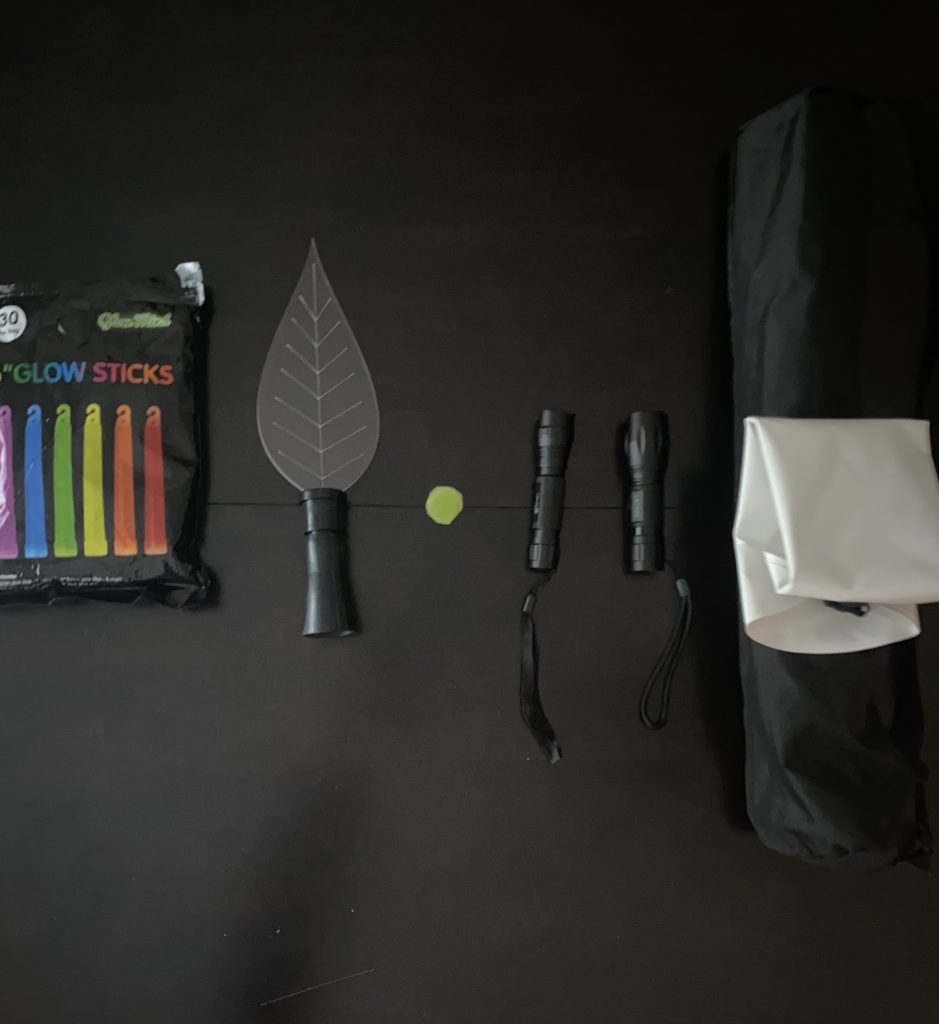
When thinking of ways to artistically express the work I’ve done, I thought about showing the trees I’ve created in ascending order of size. Doing so allowed my newest photographs from the last week to sandwich the older photographs I took in a four-photo series.
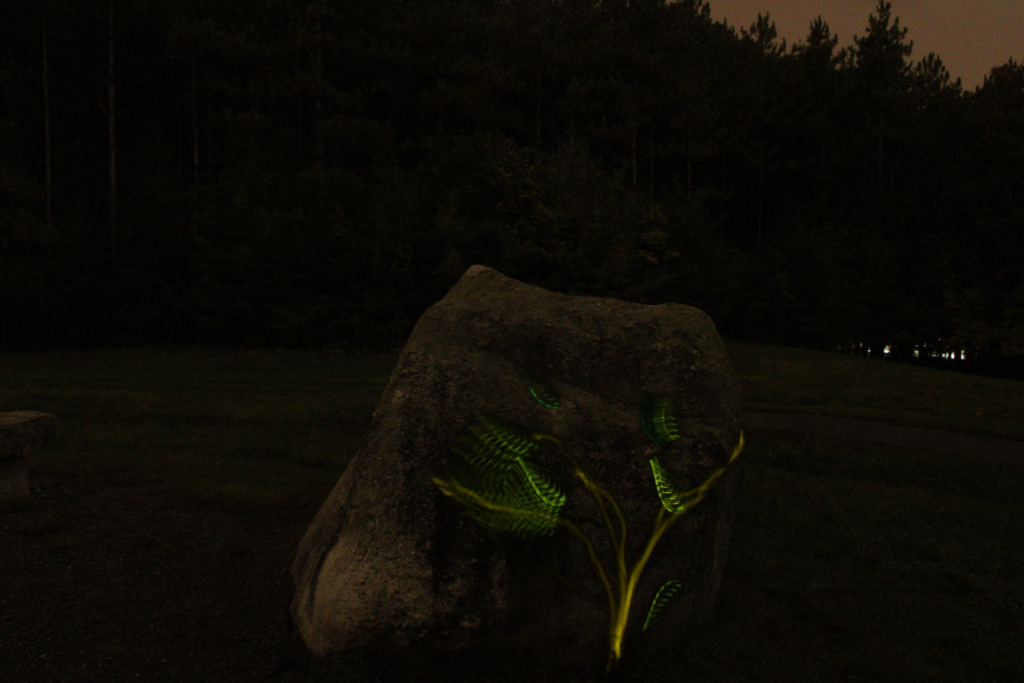
The next photograph was the earliest one taken in the series.
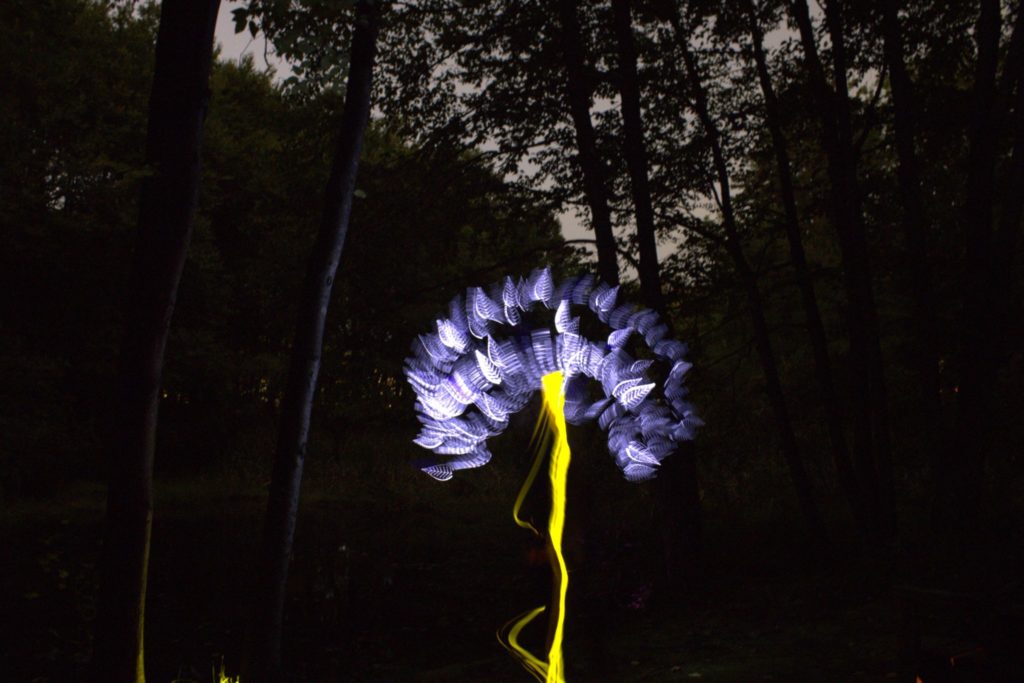
These first two photos follow the less-refined strategy that I used during the first several weeks. I was more-so painting what I felt would look right instead of thinking about it too much. This process can clearly create some cool images. However, for the next two I tried to follow a more concrete process. For the image below, my intention was to have the setting more exposed. However, it still came out looking how I wanted.

The last photograph in the series was taken further down the trail from the first photograph.
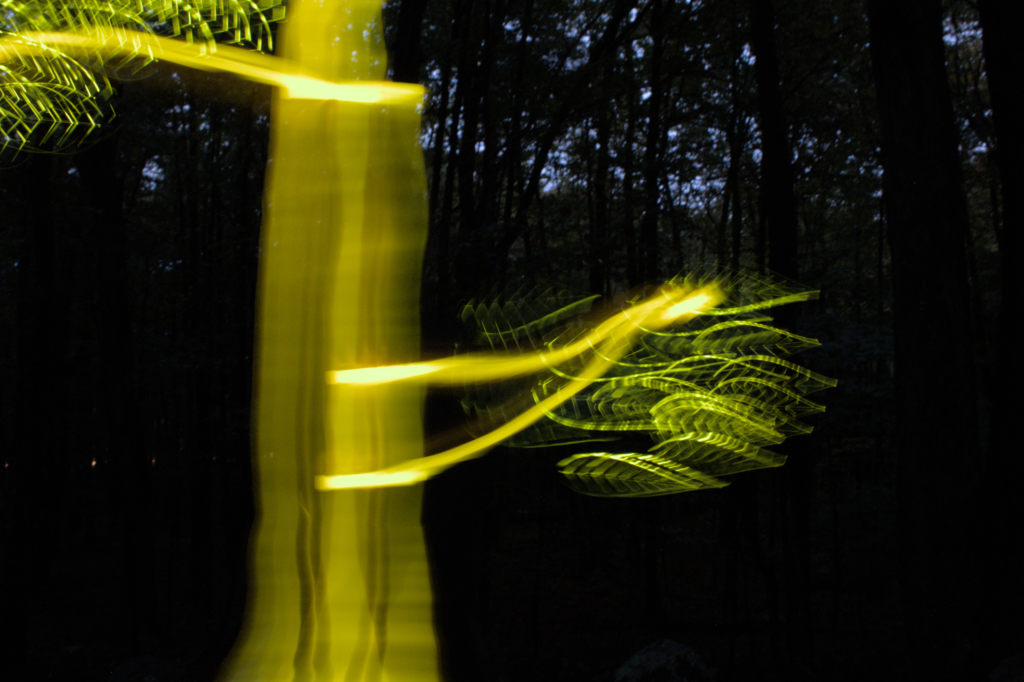
My method for these last two trees was to keep the glow sticks horizontal for the trunk. I started from the bottom of the frame, moved to the top, then moved back down over the same path while making the branches. After that I hid the glow stick and waved the leaf light where I thought the branches were. I used my arm position relevant to my body to were things were placed in the painting. While doing so, I made sure to flicker it on and off for a more condensed looking effect.
I was always aware of the light painting technique from some popular artists on social media. The process is very interesting so I’m glad I was able to try it. I was able to produce images that I’m happy with and learn new things in the process. At the beginning of the project I was using a cheap tripod with my iPhone camera. After the first couple of test images I realized that I should upgrade my gear. Below is a photograph for reference.
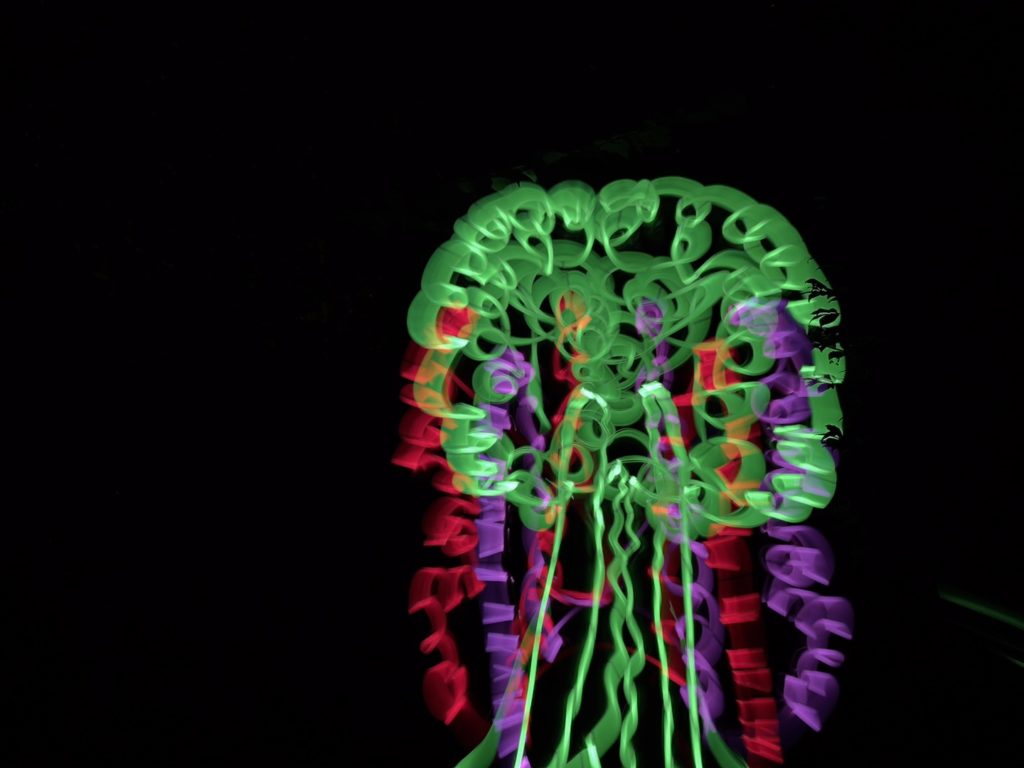
I had never used a professional camera before this class. Additionally, creating a form that looks natural when you can’t see what you’re doing is harder than I thought it would be. Based on the difference in what I was able to create from the beginning to end, I think this project was a success. If I ever land my hands on a nice camera again, I would definitely try doing these light paintings again!